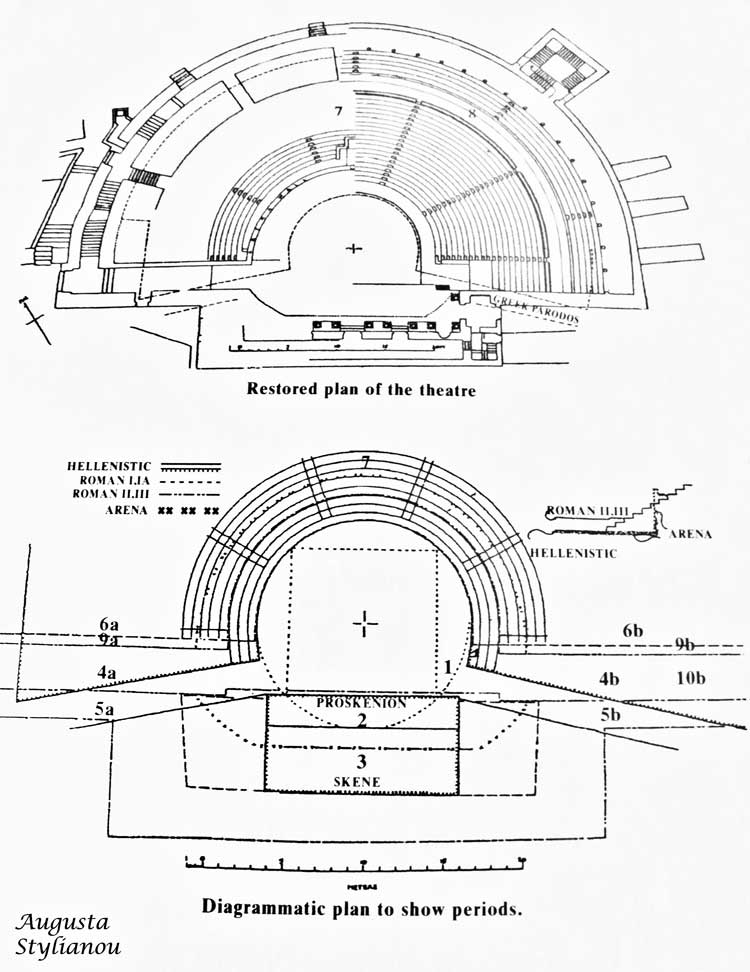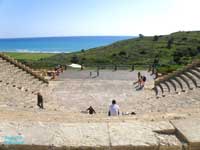.

Kourion Theater, Photo: Augusta Stylianou Artist
The original Hellenistic theatre with its circular orchestra (the stage for the chorus) (1) and proscenium (raised stage) (2) was probably constructed around the end od the 2nd century BC. At the beginning of the 1st century AD the scence (stage) (3) suffered severe damage along with the buttresses (4a-b) and the two wings above the corridors (5a-b). Remodeling work most likely took place under the emperor Augustus shortly after, greatly altering the theatre. It apperas that the theatre was reduced in size at this time, with many of the seats having been removed, to be used as building material for the new buttresses (6a-6b) of the two wings.
According to an inscription it would seem that the scence (stage) and facade were re-erected midway through the 1st century AD. (ca 64/65 AD) by Julius Cordus, serving under the emperor Nero. During the late 2nd century AD the theatre takes on the form and dimensions that we see today. The cavea (auditorium) (7), the corridors (8), and the buttresses (9a-b) are extended to the original dimensions of the Hellenistic theatre and the parodoi (the lateral entrances to the orchestra) (10a-b) are completerly re-erected. The scene (stage) is also remodeled with carved limestone architecture, marble Corinthian columns, cornices and spirally fluter columns, etc.
The final construction phase at the end of the 2nd century AD brought about changes to the sculptural architecture, which was replaced by marble, whilst one of the stage walls, the side of which was visible from the cavea (auditorium), was dressed with marble revetments. These works are linked with the emperor Septimius Severus and another person who awards the prize of a game both mentioned in inscriptions. During the 3rd century under Caracallas (214-217 AD), the first three rows of seats are removed and the theatre is transformed into an arena for animal fights. In the secons half of the 3rd century the theatre is restored to its original use and the orchestra is reinstated.
Rock cut chambers under the theatre were most probably used for the needs of the animal combatants or as storerooms.
It was destroyed and finally abandoned during the 4th century AD.
The theatre as we see it today is the result of reconstruction work by the well-known architect Antonis Travlos, an expert in restoration, in the middle of the last century.
Originally it accommodated an audience of 3000 persons.


Images Cyprus, Limassol District
| Ancient Greece
Science, Technology , Medicine , Warfare, , Biographies , Life , Cities/Places/Maps , Arts , Literature , Philosophy ,Olympics, Mythology , History , Images Medieval Greece / Byzantine Empire Science, Technology, Arts, , Warfare , Literature, Biographies, Icons, History Modern Greece Cities, Islands, Regions, Fauna/Flora ,Biographies , History , Warfare, Science/Technology, Literature, Music , Arts , Film/Actors , Sport , Fashion --- |

